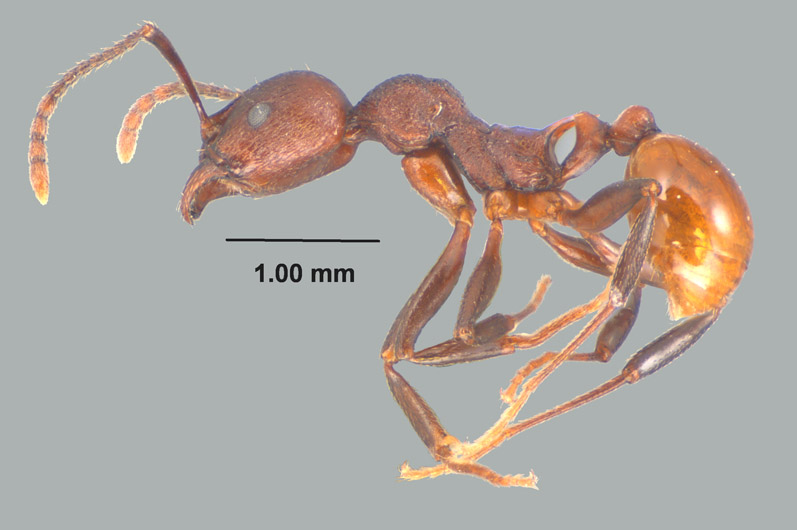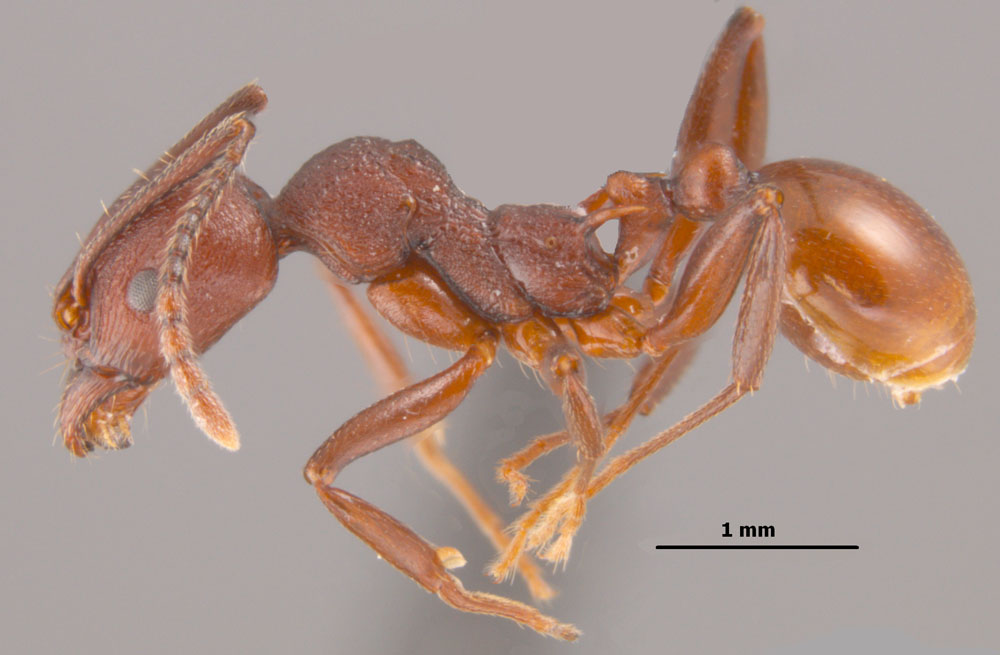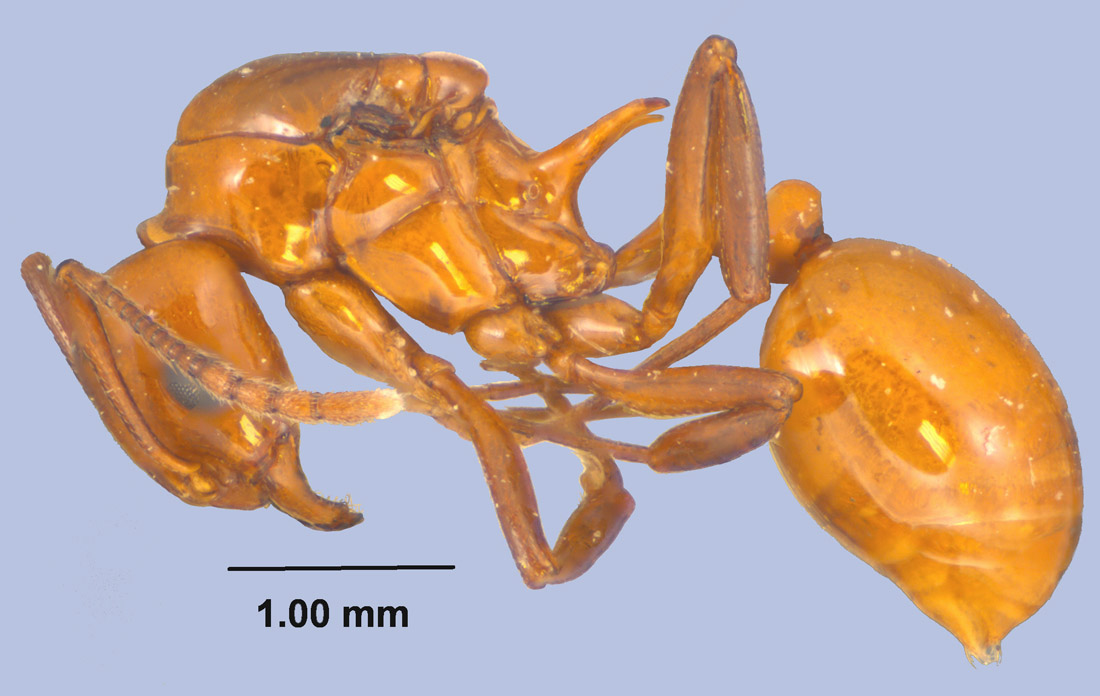Aphaenogaster tennesseensis, full face view of worker (click image to enlarge). |
Aphaenogaster tennesseensis, profile view of worker (click image to enlarge). |
Aphaenogaster tennesseensis, full face view of worker (click image to enlarge). |
Aphaenogaster tennesseensis, profile view of worker (click image to enlarge). |
Introduction
Ants in the genus Aphaenogaster are medium sized to large, slender with long legs and antennae, usually have propodeal spines (a few species lack spines), have 12 segmented antennae with the last 4 segments forming a weak club. The genus is widespread in North America and species nest in rotting wood, under bark, and in soil.
Identification
Aphaenogaster tennesseensis is relatively large Aphaenogaster species whose workers are dark reddish-brown, with heavy sculpture, long curved propodeal spines, and have the postpetiole broader than long and suboval in shape. The queens are very distinctive looking and are almost entirely smooth, lacking any obvious sculpture, and have long blunt tipped propodeal spines (see photo above).
Biology and Economic Importance
This species appears to be more common in the southern portions of MS, where it can be found foraging on trees or nesting in rotting wood. It has been speculated that this species is a temporary parasite in ground nests of other species of Aphaenogaster, including A. fulva, A. picea, and A. rudis (Smith, 1979).
Distribution
Literature Cited
Links
AntWeb Images
Discover Life Images
|







